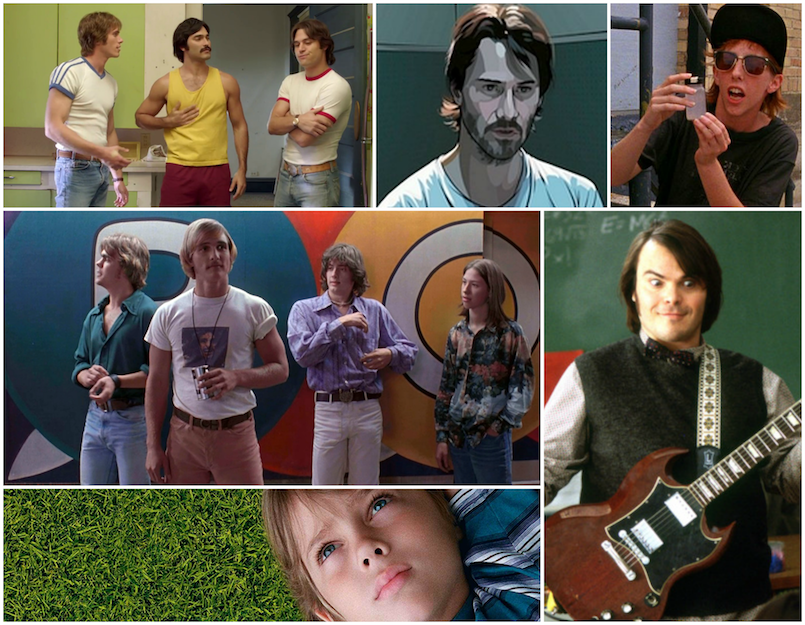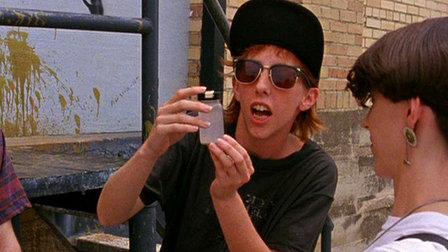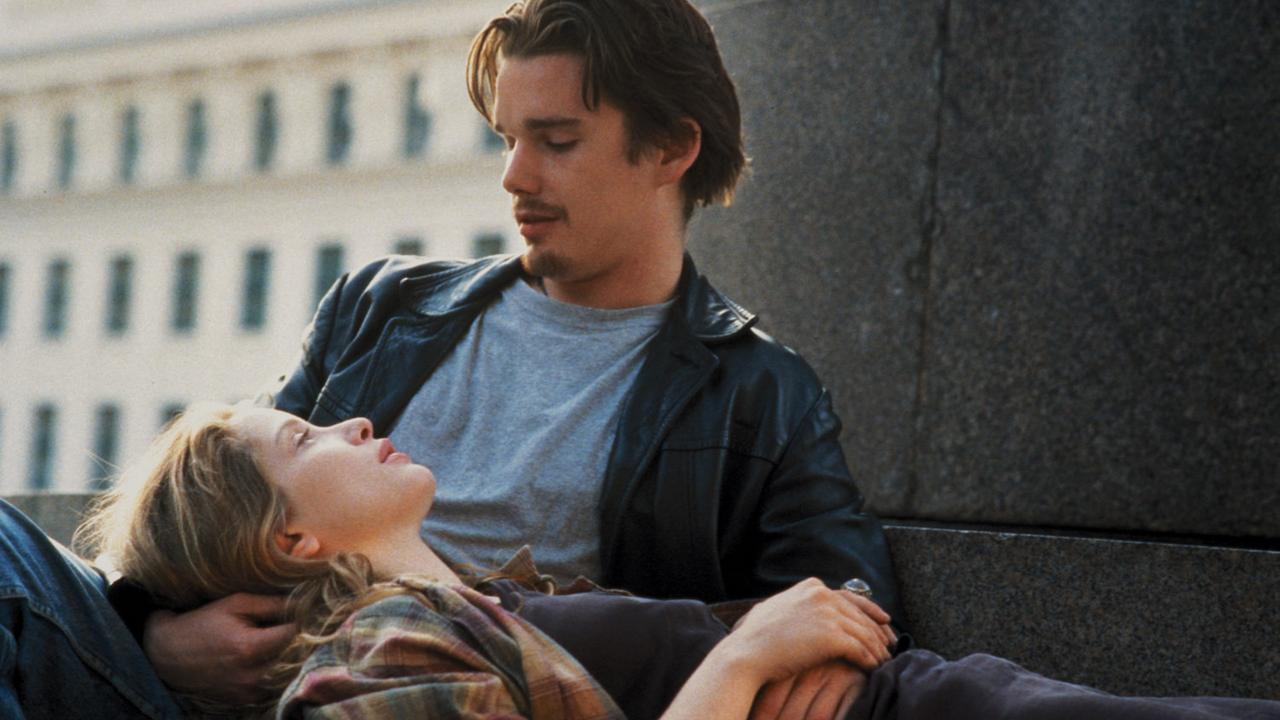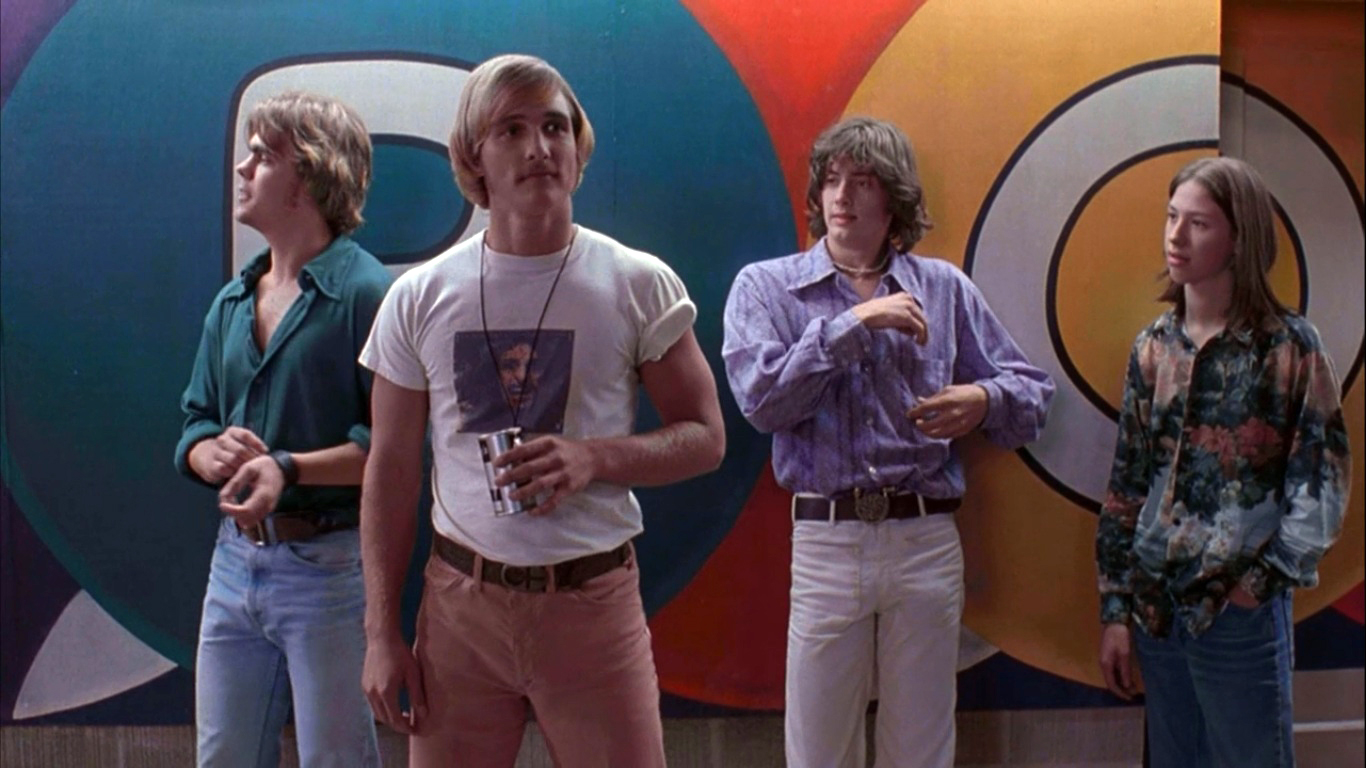
A man tells a woman he just met aboard a train about his unusual idea for a cable access show, one that would go on 24 hours a day and follow ordinary people for an entire year, “capturing life as it’s lived.”
The woman asks what most of us would: who’d want to watch that? The idea might not hold much weight, but it’s interesting because one senses it comes from a real place. It’s an idea the film’s director Richard Linklater probably had at one point, reflected in his overall storytelling approach, finding interest in lengthy conversations and true-to-life minutiae rather than more typically cinematic events. There are no car chases, no big inciting incidents, and very few crimes committed in Linklater’s films.
While he hasn’t gone quite so far as the round-the-clock reality show Jesse (Ethan Hawke) suggests in the opening of his film Before Sunrise, Linklater has used his films, perhaps more than any other director, to explore and document through his own cinematic experiments what Jesse calls “the poetry of day-to-day life.”
Linklater began his career with maybe the quintessential Generation X film, Slacker, a formless exercise in dialog and world-building wherein the film floats lazily from one conversation to another in the director’s adopted hometown of Austin. The camera most often latches onto conspiracy theorist philosophers and art-school dropouts for a few minutes apiece, capturing the poetry of everyday life in the ramblings of the weirdoes who probably were wandering aimlessly around Austin in 1991, when the film was released.
One character believes the world is best viewed through video images. Another doesn’t worry about being late because time doesn’t exist. Next to them, Jesse’s navel-gazing seems a lot more reasonable. Either way, one never senses judgment coming from behind the camera, as Linklater prefers simply to document with his unfussy visual aesthetic—almost like that character, credited only as “Video Backpacker,” who prefers to view the world through a lens.

It turns out there’s something worth hearing in the man’s speech, as out there as it seems. Linklater wants to listen and he wants us to listen because he likes ideas and the people who think enough to have them, even if they’re a little too out there for most of us to swallow. It’s this open-mindedness that makes Slacker (and many of his films including the similar but higher-concept Waking Life) such a delight to watch, documenting the entertaining idiosyncrasies and interesting ideas of these oddballs without condescension—just the laid-back humanist curiosity Linklater seems to embody in interviews and his onscreen work.
As with any humanist, Linklater is aware that every single person who happens by has their own inner life, which explains his wandering camera in Slacker and even in less obviously experimental films like Dazed and Confused. While he’s not a visual stylist, Linklater has a knack for long, wandering takes that float between conversations in search of something new and interesting among a large ensemble, giving the impression of an entire world, or in the case of Dazed and Confused, even just a crowded high school party.
Linklater picks his characters for the conversations they have, which explains his unparalleled willingness to build his films around dialogue. He lets people talk, especially in his Before trilogy. Fated intercontinental lovers Jesse and Celine do little throughout all three films other than talk, exchanging musings and monologues that expose viewers to new or touchingly familiar ideas while speaking to the characters.

Few directors would dare build an entire film around two people talking, and fewer still would succeed. But Linklater is as much a writer as he is a director, bursting with ideas that rarely sound so eloquent as when Julie Delpy and Ethan Hawke are voicing them. But the achievement of the Before movies extends beyond the writing and to Linklater’s relationship with his actors, both of whom made major contributions to the script. Their comfort-level with Linklater and their characters is palpable onscreen, making every spoken word feel naturalistic.
Though Jesse and Celine are unrealistically talkative and prone to cutting philosophical insights, their dialogue and their relationship feels real because of the way it’s allowed to breathe, occurring in between longing looks, nervous stuttering and scenic walks through European locales.
By revisiting the characters twice in the decades since Before Sunrise, Linklater turned a standalone romance film into one of the most involving portraits of a relationship in cinematic history. Despite the common structure, themes and characters of all three, each film reflects the age of the characters and the way time has changed them.
Before Sunrise embodies the romantic dream of so many twenty-somethings. Before Sunset does pretty much the same for dissatisfied thirty-somethings unhappy with their choices, fantasizing about what might have been. Before Midnight is the bitter reality of mid-40s married life, when even loving each other might not be enough to save a relationship that’s lost its freshness. Perhaps it isn’t bitter—Linklater isn’t a cynic—but simply a forthright look at the harsh effects of time on a relationship, one that still acknowledges the idea that romantic happiness can endure the most horrible argument with a significant other.
The effects of time play an important role in many of Linklater’s films, including his most audacious film to date, at least in terms of production-style, Boyhood. But the fascination has always been there, even represented in something comparatively low concept like Dazed and Confused. “if I ever start referring to these as the best years of my life, remind me to kill myself,” says football player Pink in one of the film’s key quotes, referencing the way time might change his perceptions, within a film focused almost entirely on characters who seem to be in an uncertain state of transition.

A film great beyond its attention-getting gimmick, Boyhood uses its twelve-year production schedule to show a boy in perpetual transition throughout his childhood. The gimmick allowed Linklater to capture on film the physical effects of aging in real-time while his script chronicles the emotional effects. Boyhood is great for what it doesn’t do as much as for what it does.
It doesn’t insert an unnecessary three-act structure to the whole thing. It doesn’t make Mason, the boy in Boyhood, into an unrealistically active character, especially as a child who mostly just absorbs the world around him. It doesn’t shoehorn in drama for the sake of interest but also doesn’t completely omit it. It doesn’t point out the parallels but allows the audience to draw them themselves.
The result is a film composed almost entirely of the tiny moments and memories that shape a life. Boyhood is Linklater’s greatest achievement as a humanist filmmaker, showing the difficulties, the minor tragedies and victories that mold an individual, often in the span of years. Like most of us, Mason may not have had the hardest life, but Linklater finds something admirable in the simple act of living, of enduring the rough patches, slowly finding yourself and maybe turning your experiences into art.
Few of Linklater’s films have managed the critical and commercial attention of Boyhood, because most are too intimate to command the same level of interest. Though he’s taken on a few director-for-hire jobs that suit his intimate directorial style and tend to yield passable if not exciting results (School of Rock, Bad News Bears, SubUrbia), even Linklater’s apparently minor releases are testaments to his enduring willingness to experiment with his films.
Bernie, for example, blended a comedic recreation of a crime tale with talking head testimony from real people, telling a bizarre true-crime story while simultaneously creating a portrait of a small-town in east Texas. A Scanner Darkly uses stylish rotoscoping animation to give Philip K. Dick’s science fiction classic the atmosphere of hallucinatory paranoia it deserves. Tape uses a low-quality aesthetic to tell a story contained to one night, one hotel room and three characters that becomes one of the tensest films in recent memory.
Memory, in fact, is another of Linklater’s recurring themes. Tape revolves around a confounding disagreement in memory that ultimately can’t be explained. Similarly inexplicable difference in memory pop up in both Boyhood and Before Sunset. The repeated observation comes back to Linklater’s interest with people, and especially how our minds work, whether it be memory in Tape or dreams in Waking Life, his most nakedly philosophical film.
As with Boyhood, Linklater could easily be defined by what he doesn’t do. He doesn’t rely on formula. He doesn’t do action or meticulously compose shots. He doesn’t overuse editing or feel the need to jump around constantly in order to maintain interest. He doesn’t construct unnecessary narratives to give voice to his own theories. He doesn’t profess to have any answers, though he and his characters can’t help but wonder aloud all the same. To forego so many clichés might be enough of an achievement alone, but Linklater’s films do far more than that. They manage to find the “poetry of day-to-day life” Jesse talks about in Before Sunrise, not in a 24-hour reality show but in compelling, always unique films.


